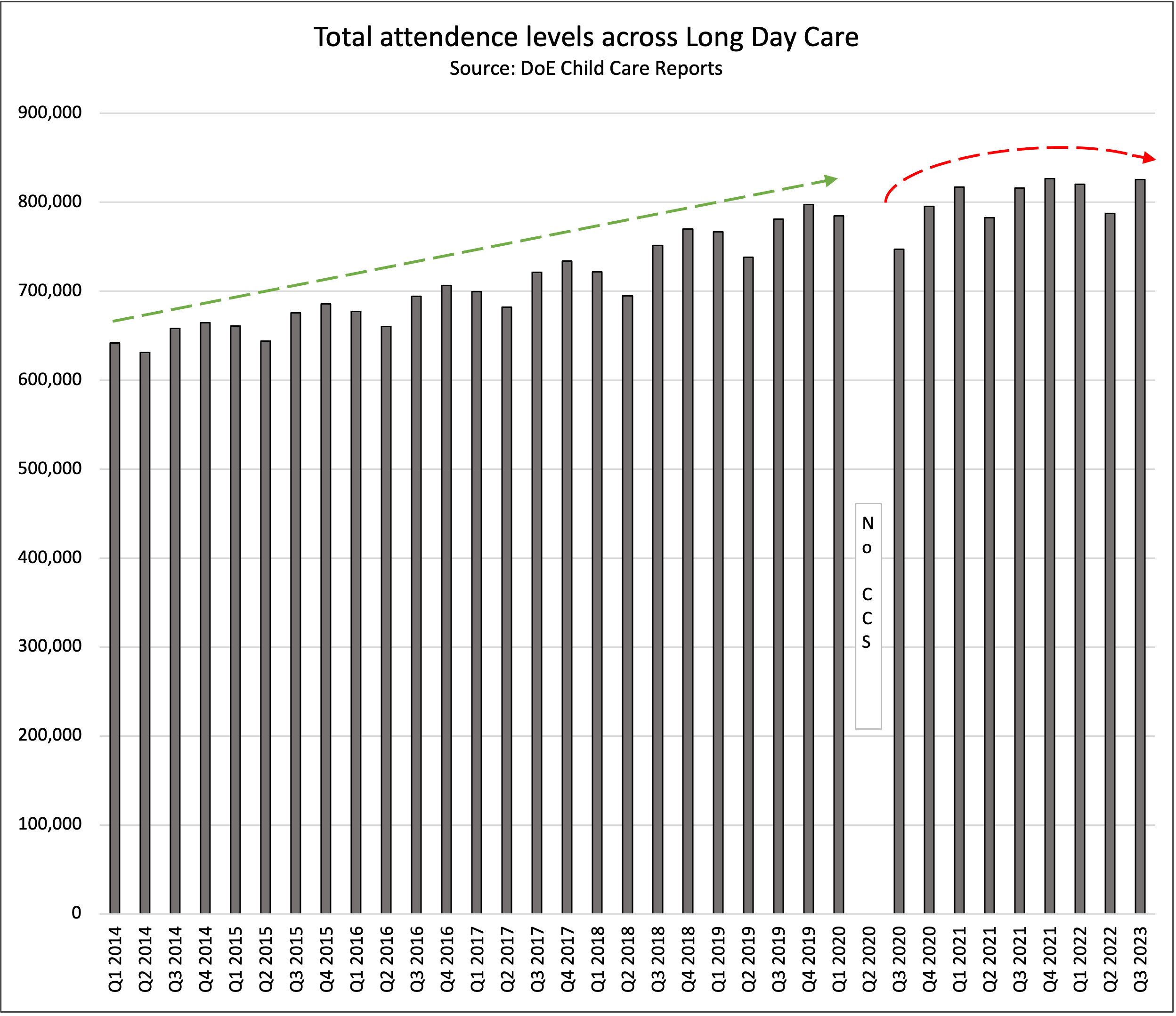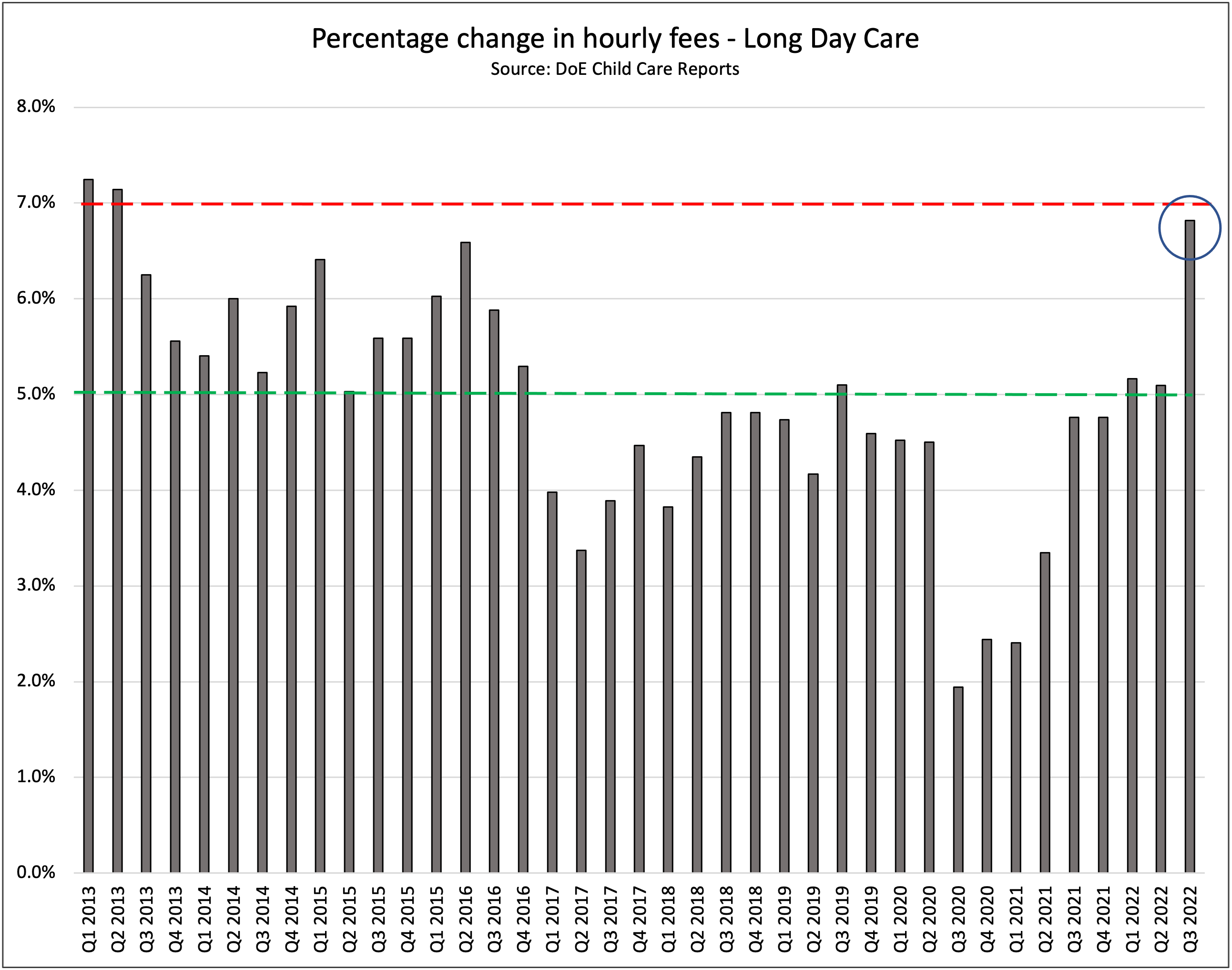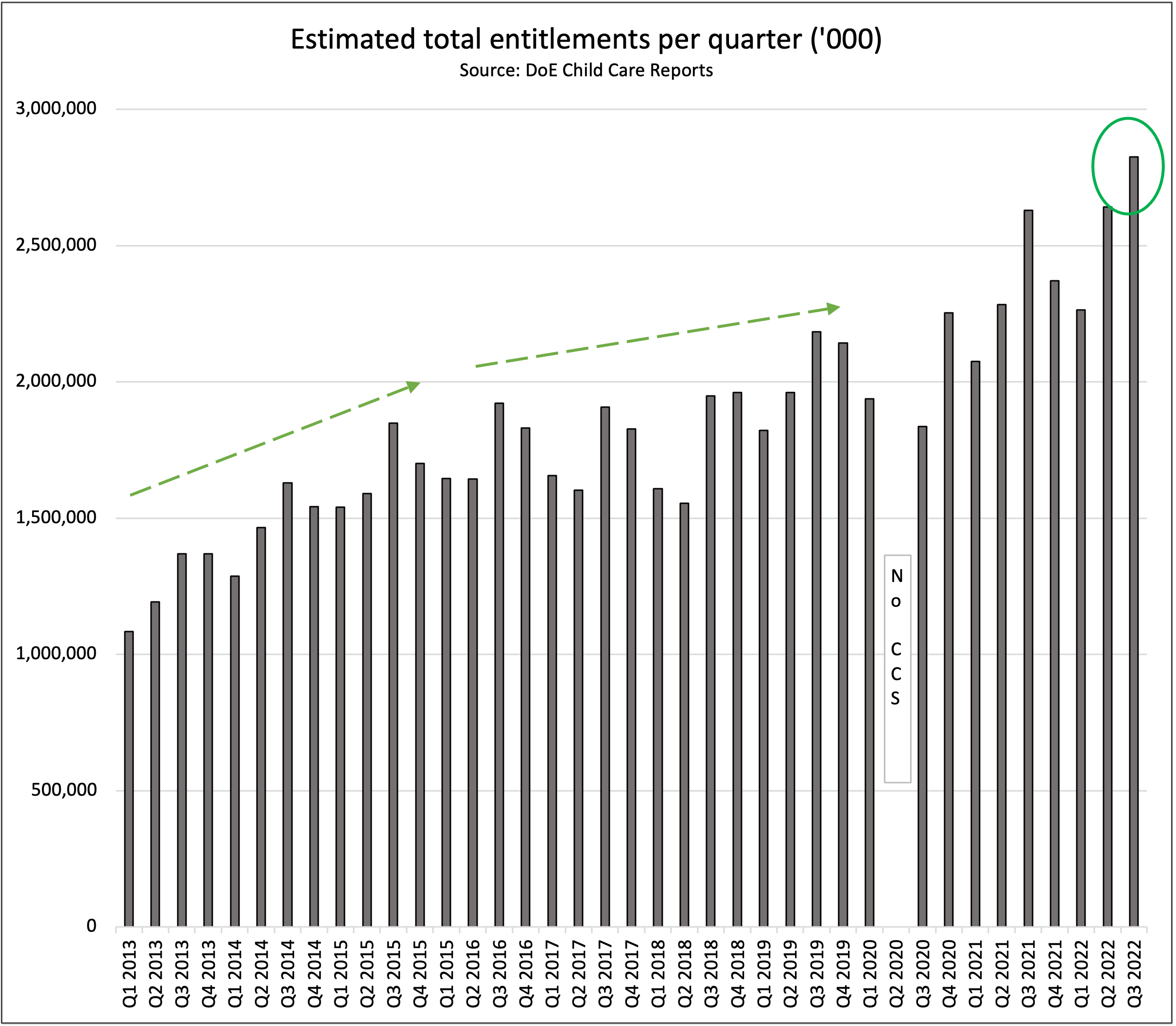LDC weekly hours in care jumps to new record but enrolment growth still lagging according to latest Dept of Ed release

The number of enrolled hours children are spending at a long day care (LDC) service per week jumped to a new record high according to the latest release of the Department of Education’s Child Care in Australia report. Despite this rise, overall enrolments continue to lag.
The report, which is released quarterly (with a six to nine month time lag), provides a valuable snapshot of key early childhood education and care (ECEC) sector data drawn from the Child Care Subsidy (CCS) administrative systems.
This release, which covers the three months to September 2023, shows children are now spending on average 32.4 hours per week in a LDC service, a 1.3 per cent increase on the June quarter and a 3.2 per cent increase on the same period in 2022.

Weekly hours in care are now up 13. 3 per cent from just before the new CCS legislation was introduced in July 2018 with the steeper trend towards more hours in care holding firmly in place ever since.
What is notable however, is that the growth in LDC enrolments, having dipped substantially in the prior quarter, did manage to recover somewhat in the third quarter but not to a level that would confirm the jump in weekly hours.

So from a high level it appears that families are electing to extend the hours of care per child in a given day but not extending the actual number of days of care per week.
There may be a number of different reasons why that may be the case but one area in particular that may explain these developments is cost, with both the cost of living generally and LDC fees specifically, moving ahead quite strongly in the reporting period for this report.
The average cost of an hour of LDC rose to $11.75 in the three months ended September 2023, a 6.8 per cent increase on the previous year and marks a step change back up to a level not seen since the beginning of 2013.

With general prices on the up, and LDC prices also increasing quite markedly, families may be looking for ways to free up a bit more time to take on additional shifts at work without having to add another full day of LDC, and the costs that would entail, to their routines by simply leaving their children in care for that bit longer per day over the course of the week.
As a result weekly hours rise, but enrolment levels stay the same.
The impact of higher prices is not just affecting enrolment and hours per week patterns but can also be seen in the total entitlements disbursed as CCS and Additional Child Care Subsidy (ACCS).
A record $2.8 billion in fee support was provided in the September quarter of last year of which 84 per cent was CCS and the balance ACCS with the jump largely attributable to the raising of the fee cap by 3.5 per cent rather than a jump in enrolments.

It is clear that Government commitments to support affordability for families remains very evident and that even though LDC is not driving CCS consumption growth as much as it used to, overall entitlements remain in an upward trend.
To access the Department of Education’s latest child care report visit its website.
Popular

Provider
Economics
Soul Pattinson lifts stake in G8 Education, increases voting power to 7.85 per cent
2025-12-16 07:00:05
by Fiona Alston

Quality
Policy
Practice
Provider
Economics
Research
Workforce
NQF Annual Report 2025: Quality gains continue, but sector faces compliance pressures and persistent equity gaps
2025-12-10 07:21:19
by Fiona Alston













